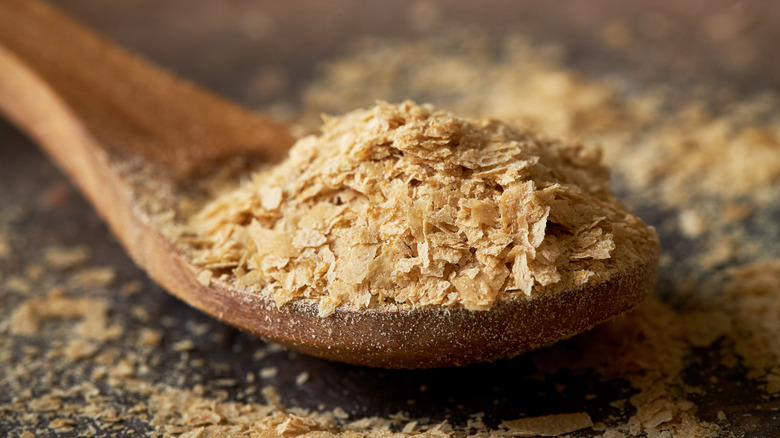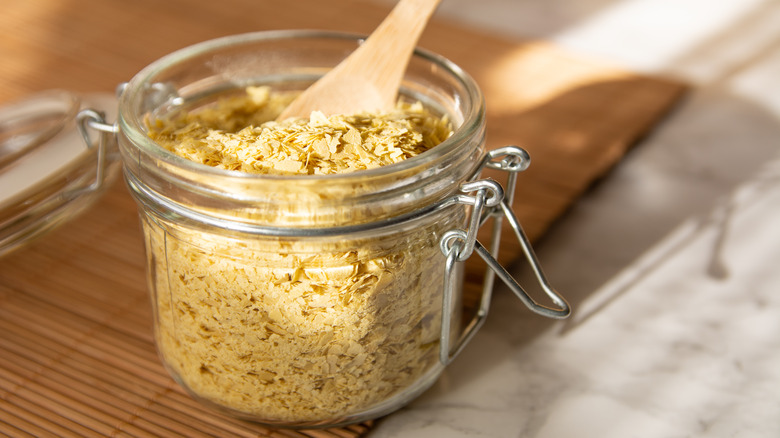The Easy Mistake To Avoid With Nutritional Yeast In Your Dishes
There's a growing segment of the population that can't get enough nooch. For those not in the know, that's not a slang term for the latest club drug, nor is it related to booch, or kombucha. It's actually the sassy nickname for an ingredient with a pretty unappetizing moniker: nutritional yeast. These little yellow flakes (which kind of look like bits of pulverized potato chips you'd find at the bottom of the bag) have long been popular with health food fanatics and, more recently, vegans.
But nutritional yeast has also started to find its way into the kitchens of curious home cooks who have no dietary restrictions yet are drawn to its umami-rich flavor. So if you're among this new crop of chefs looking to experiment, there's one common mistake to avoid: Topping a dish with the ultra-thin shards rather than incorporating them into a recipe with a binding agent. "It has a slightly dusty consistency, so it's usually best when stirred into something with a bit of liquid, or at least moisture or some sort of fat source," says Nisha Vora, author of The New York Times best-selling cookbook, "Big Vegan Flavor." "I wouldn't recommend most people sprinkle it raw onto cooked dishes."
Diet-friendly dust
Before you head to your nearest health food store to track down some nooch, it's important to better acquaint yourself with this trending product. Made from the fungus saccharomyces cerevisiae (aka brewer's yeast), nutritional yeast is deactivated through pasteurization and then dried, so you wouldn't be able to use it to leaven bread or brew beer. The yeast could easily be considered a pantry staple because it contains no gluten, soy, or sugar, which means people with a variety of food sensitivities can consume it. Fortified nutritional yeast contains vitamin B12 along with other nutrients that vegans often lack in a diet free of animal products.
Given its cheese-like aroma and tang — nutritional yeast contains a naturally occurring glutamic acid and is described by many to resemble high-in-glutamate Parmesan — vegans often turn to it as a cheese substitute. You could nooch up everything from a dairy-free nacho dip made by blending the yeast with powdered cashews, spices, salt, and some citrus juice to a creamy risotto, mixing the yeast with cashew milk for the base. If you're a perfectly happy omnivore who simply wants to take something like grilled cheese to the next level, lean into nutritional yeast's nuttiness and sprinkle some between slices of cheese to enhance the savoriness. Similarly, boost the umami in a homemade pizza sauce by stirring in some nooch. And if you use a fortified version, you'll not only up your vitamin intake, you'll also increase you fiber and protein.

